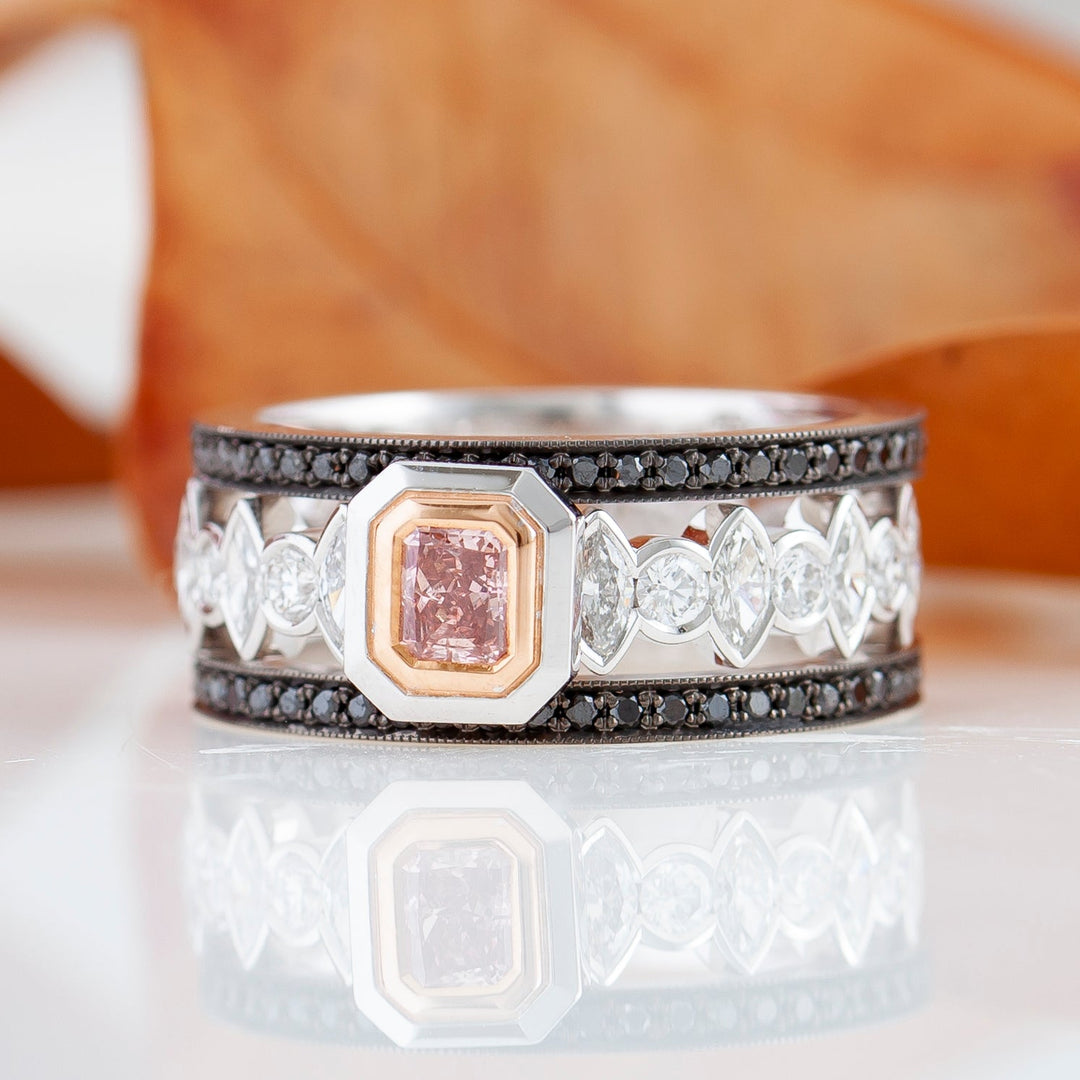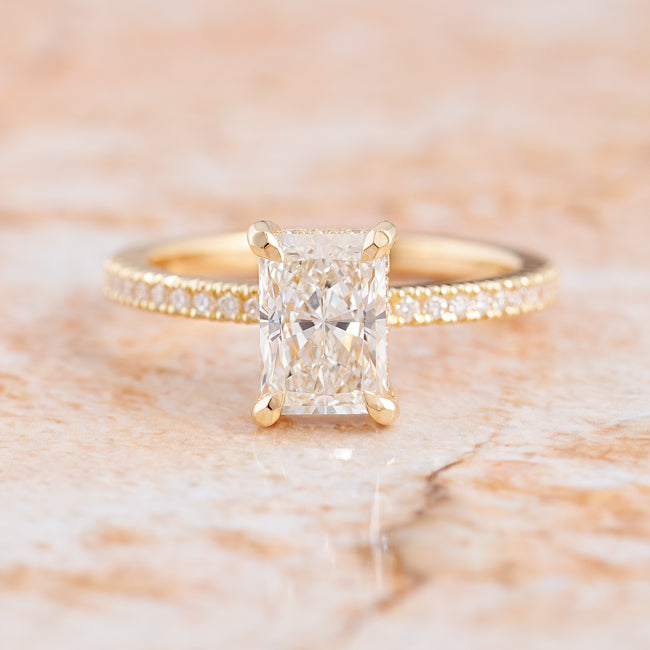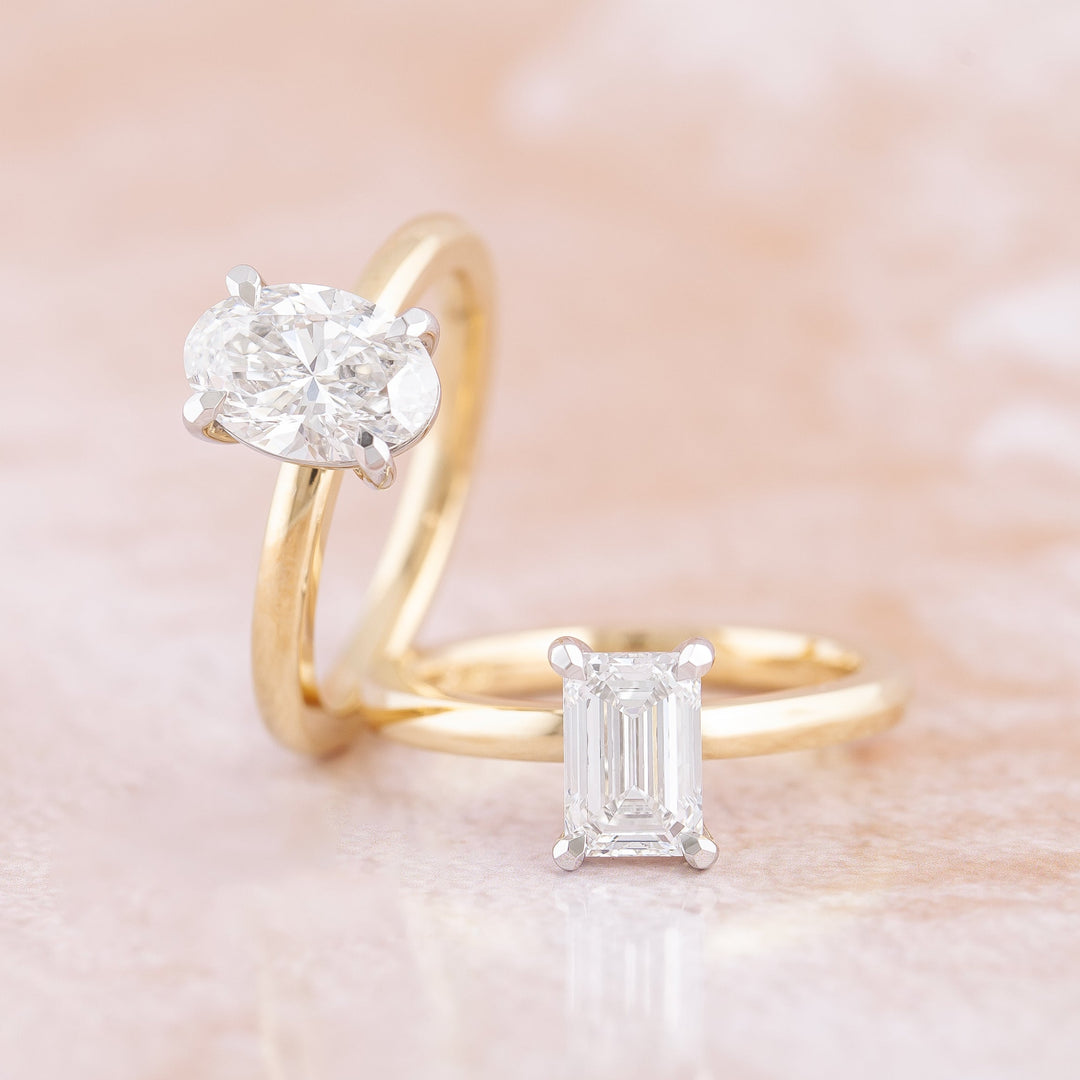Lab Grown Diamonds
THEIR BEGINNINGS
Since the late 1800s, scientists from all over the world have been attempting to reproduce diamonds in laboratories. It wasn’t possible until 1955 that General Electrics found a way to produce the first diamond. However, those diamonds were small with poor quality. It wasn’t until only a few years ago that technology reached a point capable of producing larger diamonds that had the high quality of a gem.
A mined diamond is created through the same method using heat and pressure as a lab grown diamond. Nature just happens to do it naturally over a much longer period of time.
THEIR COMPOSITION
Both mined and Lab grown diamonds are real, sharing the exact same chemical composition, molecular structure, and physical and optical properties – something that cannot be said for any form of diamond simulant or imitation (Moissanite, Cubic Zirconia). Diamonds are solid forms of pure carbon. Solid carbon can occur in different forms depending on their type of chemical bond. These are known as allotropes. Diamonds are allotropic where the atoms are arranged in a crystalline form. They are the only gems made up of a single element; typically about 99.95% carbon. The other 0.05% may include trace elements, atoms that are not integral to nor a part of the essential chemistry of a diamond. These trace elements (e.g. boron, nitrogen) as well as other natural occurrences such as radiation exposure, can influence the shape or colour of a diamond. This applies to both mined and Lab grown diamonds.
PRICING
One striking contrast between lab-grown and mined diamonds is their value. Lab-grown diamonds are significantly less expensive, and it’s not due to the quality. The price difference is due to the healthy competition found in Lab grown diamonds and the unhealthy monopolies that have occurred with mined diamonds. So while the stone can have the same quality, the cost for the consumer is massive.
THE GRADING PROCESS
Both lab grown and mined diamonds are graded using the exact same grading system. This is commonly known as the 4Cs – Colour, Clarity, Cut, and Carat. This grading system was first created by Robert M. Shipley, founder of the Gemological Institute of America (GIA). This process is now the universal grading system used for all diamonds, regardless if they are lab created or mined from the ground.
CERTIFICATION
When it comes to certification, there is no difference. Both types of diamonds can be graded and certified by any laboratory. The certificate of a lab created diamond will contain an indication of it such as “Laboratory-grown”, “Laboratory-created”, to differentiate them from mined diamonds.
ETHICS AND ENVIRONMENT
Natural diamonds are mined from the Earth, this process has an environmental impact. This impact is nowadays so heavily governed that mining companies must restore the Earth back to health once the mine ceases operation.
Lab grown diamonds also have an environmental impact. The process to create a lab grown diamond uses fossil fuels, and emits carbon back into the earths atmosphere. IMO – both impact the earth in different ways, although minimal.
FROM ROUGH TO RETAIL
From Rough to Retail, there is no difference between lab grown diamonds and mined ones! Rough to Retail is how we refer to the life of a diamond from the time a mined diamond has been unearthed OR a Lab grown diamond has been produced (as a rough stone) up until the moment it hits the market and is sold to the end consumer. This process and all costs involved are exactly the same. Rough diamonds of either origin (Lab grown or mined) are Sorted, Cut, Polished, Graded and attain Certification in exactly the same way.
It is worth noting, however, that on average, man-made diamonds are produced in a more ideal/excellent manner than mined diamonds regarding their cut grade. This is because mined diamonds are usually shaped/cut to maximise their weight as much as possible. On the other hand, since a grown diamond already naturally grows in a more ideal shape for cutting down into a gem, it will be cut with the sole intention of producing the most ideal cut and on average, will result in stones of a superior cut grade.




